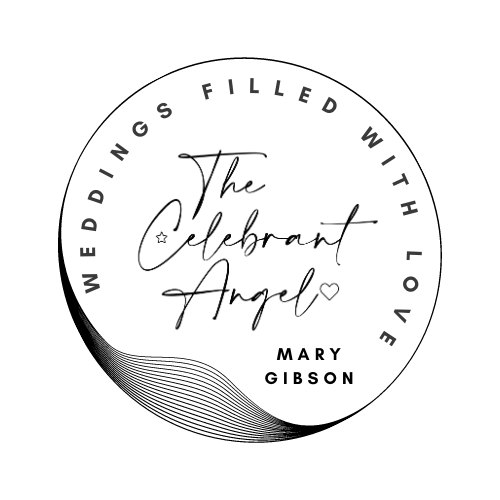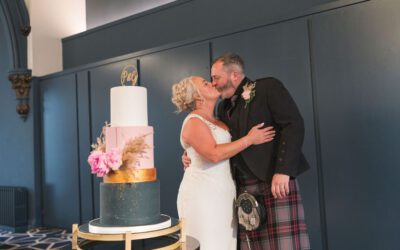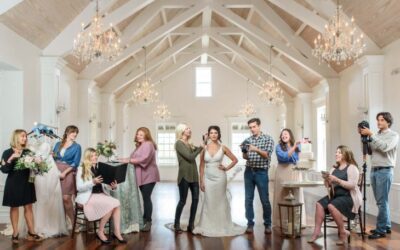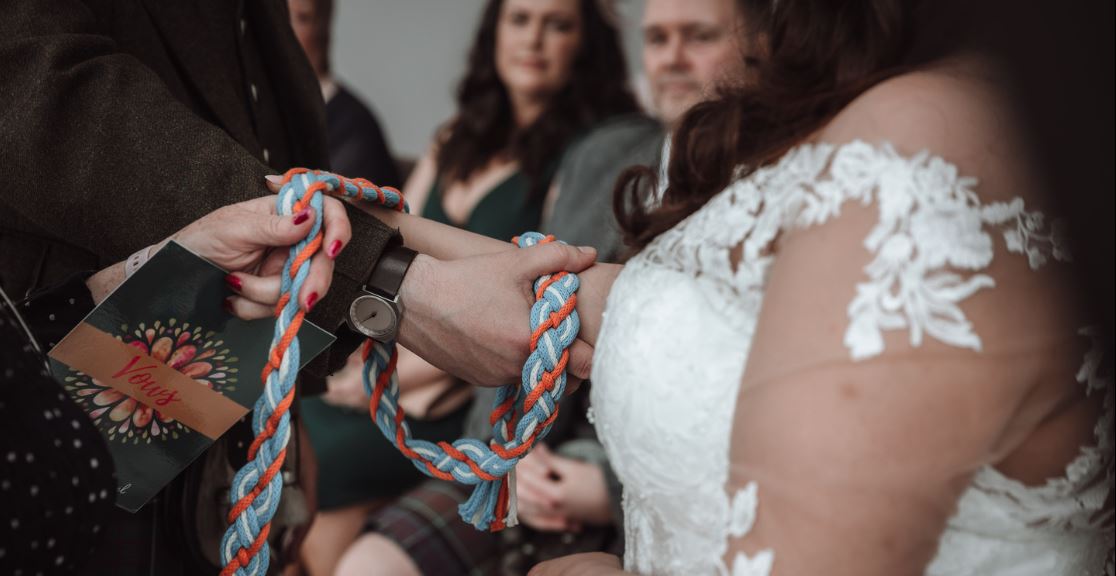
Hand-Fasting Ritual
From Ancient to modern Traditions : Embrace the Timeless Charm of Hand-Fasting
Have you ever been to a wedding where the couple did a Hand-fasting during their ceremony?
Want to learn what the hand-fasting ritual is all about?
Keep reading, and let me show you how handfasting could fit into your wedding ceremony.
A Hand-fasting is a symbolic ritual usually used in a wedding ceremony that binds a couple’s hands together using cords or ribbons, often of different colours.
The ritual symbolises the joining of the couple
Hand-fasting is a wedding ritual that goes way back in time, some say to 7000 BC.
It remains one of the more popular rituals for wedding ceremonies. Perhaps due to TV and films including it in their wedding scenes.
Ever watched Braveheart? I bet there aren’t many who haven’t.
William and Murron had a hand-fasting ritual; remember that bit? Wasn’t that so romantic?
Films like Braveheart have taken symbolic rituals from ancient history back into the modern-day wedding.
William Wallace: I want a wife, and children, and to grow crops, but it’s all for nothing if you don’t have freedom
What Is A Hand-Fasting
A hand-fasting ritual involves quite literally tying the knot.
Hand-fasting involves joining the couple’s hands and wrists so that the pulse points are together.
Tradition saw it used by couples promised to each other, an engagement of sorts, without the ring.
In Celtic tradition, the binding would be for a year and a day. If the couple survived this year and a day together and wanted to stay together, they were considered married.
It is actually thought that is where ‘tying the knot’ came from.
Whilst hand-fasting is not legally binding, it’s a beautiful old tradition that can be woven into our modern-day weddings.
It still signifies commitment between two people and the union of their love.
There are no rules on how you use the symbolic ritual during your ceremony. We can tailor that to your wishes.
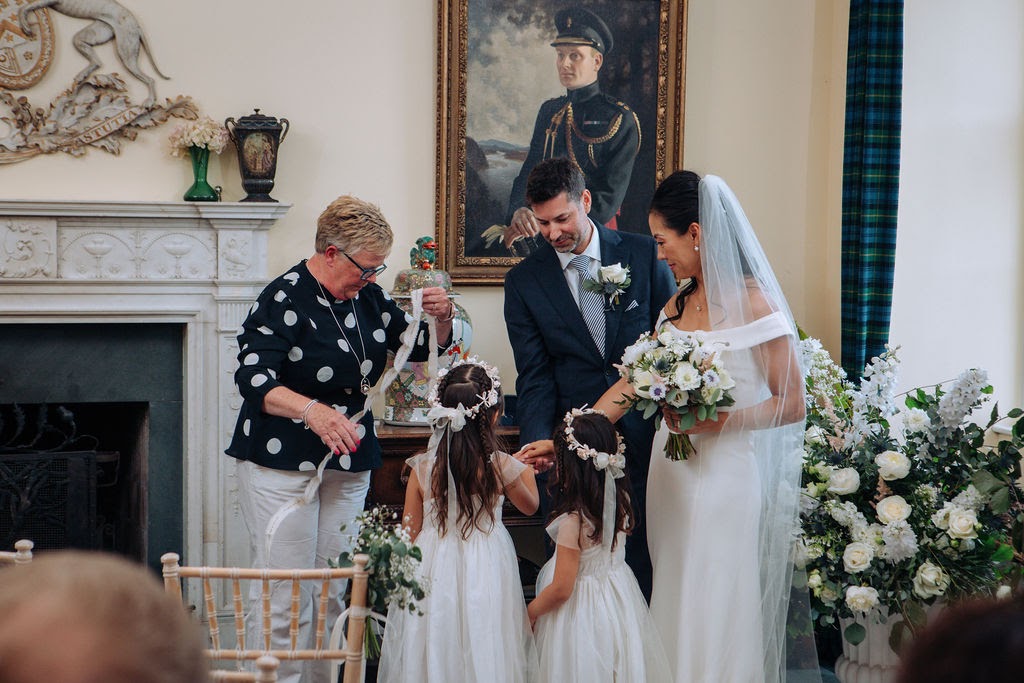
What Do You Use For Hand-Fasting Ties
The ties for a hand-fasting ritual can be made from various materials: vines, ropes, cords, ribbons, or any other material.
Again, there are no rules on what you use for the ties, as long as they are long enough to wrap around the wrists and tie up into a knot. You can use anything of your choice.
We recommend that the cords are at least two meters long each, which allows for looping them around your hand and wrists.
It is very easy to make plaited ribbons for your handfasting ceremony, something you could get members of the family to do for you perhaps?
How many ties are used in a hand-fasting?
There are no hard and fast rules for how many ties or ribbons you have to use in a handfasting ceremony.
This can depend on whether family and friends are involved in your ceremony’s handfasting part.
If you wanted to include both your parents in the handfasting, you would have one for yourselves and one for each set of parents.
So how many you have is dependent on whom you include in that part of your ceremony.
Does It Matter What Colour Of Ties I Use
No, it doesn’t matter what colour the ties are. Some couples have ties that match their outfits.
You can add further meaning to your cords by putting some thought into the material you might use for the ceremony.
For example, if you still have the clothes you wore for your first date, a strip of fabric from them would be a perfect addition to the ceremony, or if your parents have something from their wedding, it might be nice to include that.
There are various meanings behind the colours of the bindings.
Red is for passion/Orange is for kindness.
Yellow is for joy/Green is for health
Blue is for tranquillity and sincerity.
Purple is for Sentimentality
Black is for strength and wisdom.
White is for peace and meditation.
Pink is for romance and happiness.
Brown is for the earth and home.
Silver is for creativity and values.
Gold is for energy and intelligence.
Just remember, though, there are no rules to having these colours in your ties; they are yours to design for you as a couple.
The Knots
There are various kinds of knots, which celebrants are familiar with, for example, infinity knots, lovers knots, trinity knots, to name a few.
Each has its own meaning, so symbolically, one may suit you more than others, so it’s worth looking into if you enjoy the potential for meaning levels in these types of ceremony.
An Infinity knot symbolizes immortality, continuity, eternal reproduction.
The lover’s or love knot has a long history of being a symbol of love. It represents the unbreakable bond and the eternal connection between two lovers. … The Celtic knots consist of unbroken loops with no beginning and end, symbolizing eternity like the love between a married couple.
Trinity knots symbolize and honour the Mother, Maiden and Crone of the neo-pagan triple goddess. It signifies the three life cycles of a woman in relation to the phases of the moon.
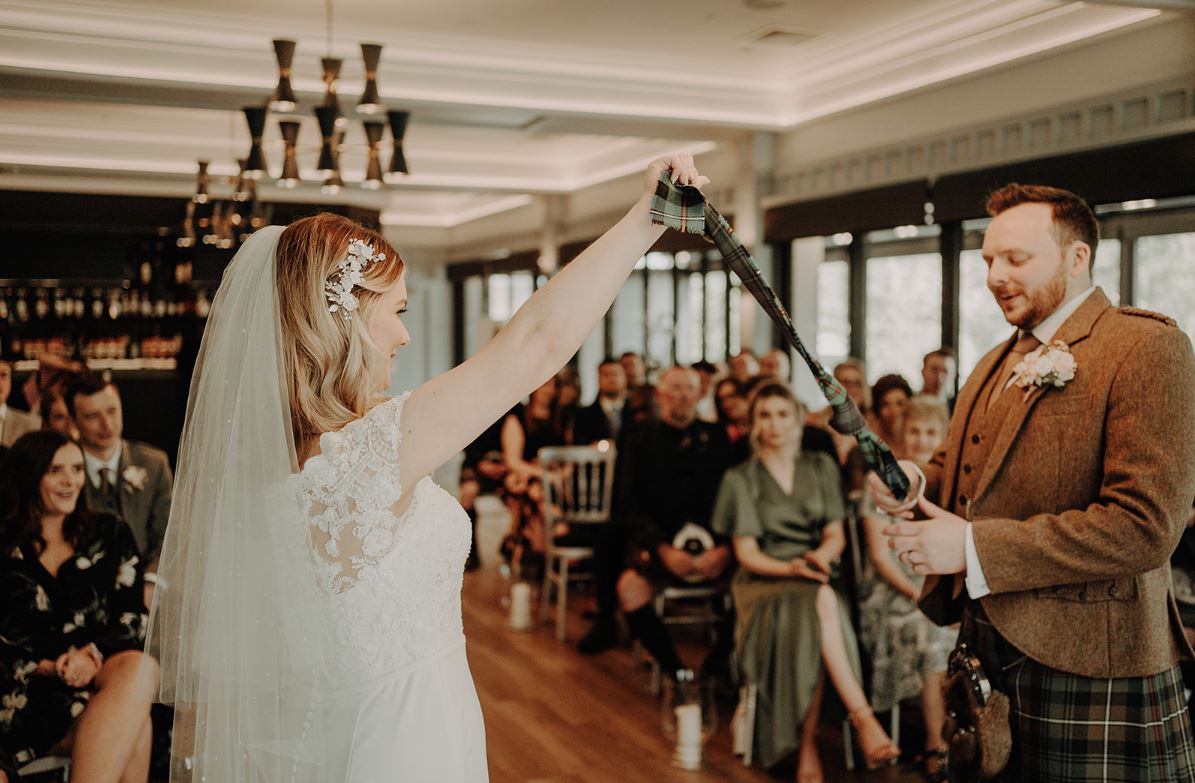
How Do You Do A Hand-Fasting
The most popular way of handfasting is to have the couple hold hands, facing each other with their pulse points touching.
But you can also do it side by side.
The cords are then wrapped around their wrists, binding them as one. This can be tied around the wrists as often as six times; some couples repeat a vow for each bind.
When Does It Happen In The Ceremony
Hand-fasting can be done at any point in your ceremony that you like, but it’s lovely to see it being done before the vows so that the couple are tied together as they exchange their vows.
If you want to include a friend or family member in another way during your handfasting, they could do a reading whilst you are bound together or being bound together.
A celebrant will work with you to make sure it’s at the right part of the ceremony for you though.
If you think a Hand-fasting is for you, then set about planning yours.
Get creative.
Use your imagination.
Be inspiring.
And always be yourselves!
If a Hand-fasting is something that resonates with you, and you would like to know more about including a Hand-fasting in your ceremony, then please drop me a message, and let me tell you a bit more about it.
More from The Celebrant Angel Blog…
Gillian and Paul’s Wedding
Gillian and Paul's wedding Gillian and Paul's wedding was so much fun. Their...
Thainstone House Hotel – Aberdeenshire Wedding Venue
Thainstone House – Aberdeenshire Wedding VenueA venue set in a picturesque and tranquil...
Submitting M10 Forms In Stirling
How To Submit M10 Forms To Sitrling CouncilWhere would be without paperwork!Getting...
7 Wedding Entertainment Ideas
7 Wedding Entertainment IdeasEntertainment keeps guests having fun and energizedWeddings...
Choosing Your Wedding Day Perfume
Choosing Your Wedding Day PerfumePerfume is the invisible, unforgettable, fashionable...
What To Expect At A Wedding Fayre
What To Expect At A Wedding FayreBe ready for every sensation to be aliveHello newly...
